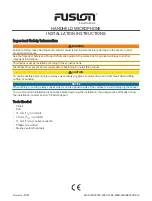
9-2
L60 Line Phase Comparison System
GE Multilin
9.1 PHASE COMPARISON ELEMENT 87PC
9 APPLICATION OF SETTINGS
9
and ground directional. The user must be aware that auxiliary element assigned with FDL AUX does not provide any trip-
ping function, but only starts the carrier to send pulses to remote terminal and allow the coincidence detector to make trip/
block decisions.
87PC FDH AUX:
This setting is provided for cases (similar to FDL AUX) when sensitivity of the built-in FDH operating on the I_2 –
K
× I_1
quantity is not sufficient. FDH AUX is connected in parallel with the built-in FDH fault detector and is intended to be
assigned with elements such as distance, negative-sequence overvoltage and overcurrent, and ground directional. FDH
(along with FDH AUX) provides arming action for phase comparison trip decisions, allowing trips only when the coincidence
detector detects internal fault conditions and FDL (or FDL AUX) operates.
87PC SYMMETRY CH 1 AND 87PC SYMMETRY CH 2:
These settings are used to make the local squared signal and the received signal from the remote terminal symmetrical. To
set it properly, keying of the remote transmitter and an oscilloscope are required. If the received signal is ideally symmetri-
cal with respect to the MARK and SPACE signals, a value of 0 ms (set as default) should be used. If for example, measured
length of the MARK is longer than SPACE for 4.0 ms, setting –2.0 ms to be entered. If the measured length of the MARK is
shorter than SPACE for 3.0 ms, s1.5 ms is to be entered. As sum of MARK and SPACE signals equals the length of
the power cycle, corresponding scaling of the signals should be made for off nominal system frequencies.
Negative setting time is needed if the receiver elongates the received signal and positive setting time is needed if the
receiver shortens the signal.
The L60 allows the customer to check and set channel symmetry without using an oscilloscope, by means of FlexLogic™
operands and applying the corresponding current to the relays which in turn key the PLC and consequently measure
MARK and SPACE signals on the oscillography. Moving cursors and measuring an average from a few points time, the
user can determine and enter setting.
87PC PHASE DELAY CH1 AND 87PC PHASE DELAY CH2:
These settings are made in the field to be equal to the sum of three delays; symmetry adjustment, propagation time of the
line and receiver. Different methods can be used.
The L60 allows the customer to check and set phase delay without using an oscilloscope and by means of FlexLogic™
operands and applying the corresponding current to both relays. Oscillography shows the time difference (including PLC
delay and line propagation time) between local and remote signals. Moving cursors and measuring an average from a few
points time, the user can determine and apply the proper setting
87PC STABILITY ANGLE:
Stability angle setting must accommodate the security requirements for the external fault and dependability requirements
for the internal fault. Default value 3 ms corresponds to about 65 degrees of blocking zone for a 60 Hz system. It overrides
sources angular shift resulting from load, charging current, CT errors, etc.
The stability angle js can be estimated as follows:
s =
load +
capac +
ct
where:
•
load is a sources angular shift phase between the line terminal at maximum expected load, expressed in electrical
degrees.
•
capac is the capacitive current compensation angle evaluated as
capac = arctan (Icapac / I
FDH
) expressed in electri-
cal degrees, where Icapac is a line capacitive current and I
FDH
is the setting of FDH (fault detector high).
•
ct is the CTs error and saturation compensation angle and can be adopted as equal 10° for most cases unless there
is a special consideration or concern. For such cases
ct can be increased up to 20°.
87PC TRANS BLOCK PICKUP:
This setting is used to increase security during and after clearing of an external fault and to prevent false tripping during
current reversals. The setting should be higher than the time difference in operation between FDH and output from the
coincidence discriminator. A setting 10-30 ms gives sufficient security for most conditions.
Summary of Contents for L60
Page 10: ...x L60 Line Phase Comparison System GE Multilin TABLE OF CONTENTS ...
Page 57: ...GE Multilin L60 Line Phase Comparison System 2 27 2 PRODUCT DESCRIPTION 2 3 SPECIFICATIONS 2 ...
Page 58: ...2 28 L60 Line Phase Comparison System GE Multilin 2 3 SPECIFICATIONS 2 PRODUCT DESCRIPTION 2 ...
Page 482: ...6 26 L60 Line Phase Comparison System GE Multilin 6 5 PRODUCT INFORMATION 6 ACTUAL VALUES 6 ...
Page 554: ...10 8 L60 Line Phase Comparison System GE Multilin 10 2 BATTERIES 10 MAINTENANCE 10 ...
Page 674: ...B 110 L60 Line Phase Comparison System GE Multilin B 4 MEMORY MAPPING APPENDIX B B ...
Page 704: ...C 30 L60 Line Phase Comparison System GE Multilin C 7 LOGICAL NODES APPENDIX C C ...
Page 720: ...E 10 L60 Line Phase Comparison System GE Multilin E 1 PROTOCOL APPENDIX E E ...
Page 732: ...F 12 L60 Line Phase Comparison System GE Multilin F 2 DNP POINT LISTS APPENDIX F F ...
Page 742: ...H 8 L60 Line Phase Comparison System GE Multilin H 3 WARRANTY APPENDIX H H ...
















































